Basics for ice cream production
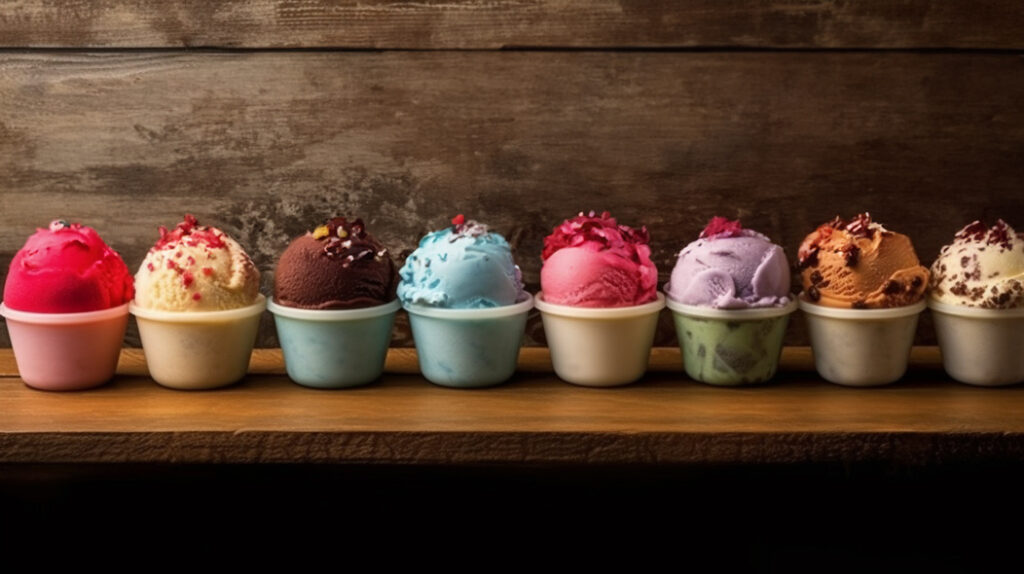
In the following, I would like to explain a few basics about ice cream and how to make it. We will look at the individual steps and why it can be a challenge to keep creamy ice cream in the freezer at home. We will also look at the different ice cream ingredients and useful equipment.
Content
Basic steps for making ice cream
- Production of the ice cream mass
This varies greatly from variety to variety. Below is more general information about this. As a rule, the various ingredients are mixed together and briefly heated on the stove. The time required varies from a few minutes to 30 minutes. - Cool and ripen in the refrigerator
This step can be extended from a few hours over several days. The prerequisite is that one has worked hygienically. Some swear by a long infusion time. Personally, I prefer a few hours and extend it only when it suits the process better. - Freezing process
The ice cream mass is transformed into ice cream in the ice cream machine (approx. 30 minutes) or in the freezer (approx. 4 hours). - Development of the final structure
When made in the ice cream maker, the structure of the ice cream develops better when it is further cooled down for 1-2 hours in the freezer. For those in a hurry, this step can also be skipped, but the ice cream melts quite quickly directly from the machine.
General rules for ice cream production:
- Hygiene is a major issue in the production of ice cream - whether at home or in the factory. Milk and eggs are susceptible to pathogens. Therefore, always wash hands thoroughly with soap before beginning and use only fresh ingredients. All kitchen equipment must be thoroughly cleaned after each use.
- Ice cream easily takes on the taste of other foods. Therefore the ice cream mass and the finished ice cream should always be hermetically sealed containers must be kept.
- Even if the ice cream container holds 1.2-1.5 liters, you should not fill it to the top, but usually only allow a maximum of 1 liter of cooled ice cream mass to be processed. Because during the freezing process will up to 25% air introduced into the mass and the volume increases.
Challenges in home production
If you want to make ice cream at home, you have to overcome a few obstacles. But none of them is really difficult.
One of them is the right equipment. You can get ice either in the Freezer or in a Ice cream maker with or without compressor manufacture. There are different advantages and disadvantages of the individual production possibilities. In general, I would always advise you to use an ice cream maker, unless it is about an Granita or Nicecream. Sorbets can also be made in the freezer, but the structure benefits greatly from an ice cream maker.
I'm currently writing a series of articles to help best ice machines for home to identify. The first two articles are already ready. Should you want to buy an ice cream maker, take a look at my Ranking for ice machines without compressor and Ice cream machines with compressor for beginners an.
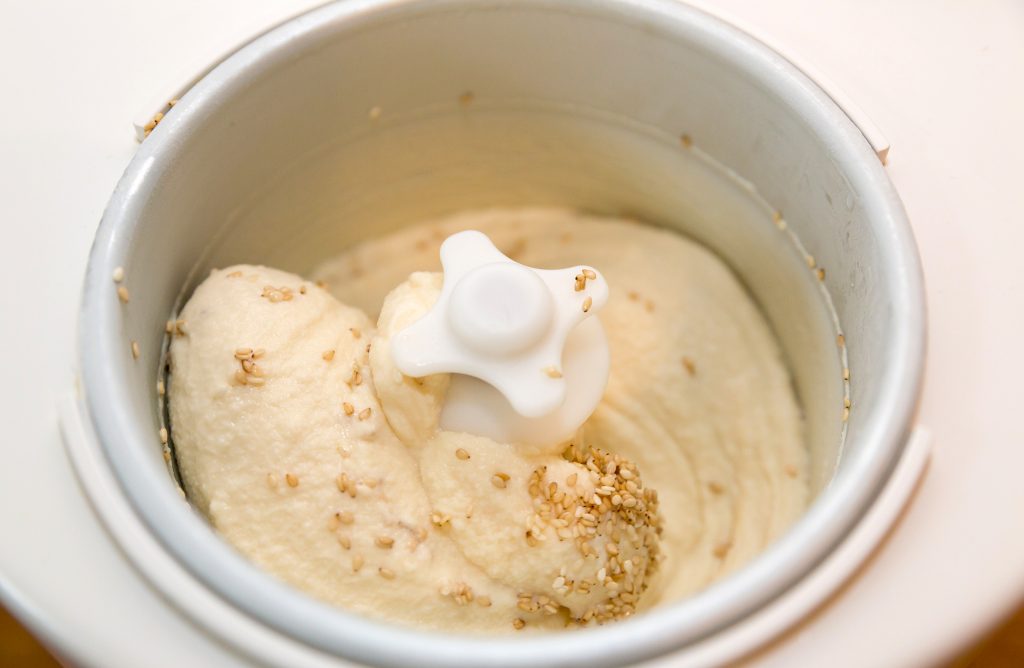
The next hurdle is the Temperature of the home freezer. At home, you usually don't have such a high throughput as in an ice cream parlor. And so it happens that you store your ice cream in the freezer for a certain time.
Some say you should Always prepare fresh ice cream and eat. The ice cream that is not eaten that day can be defrosted again and stored in the refrigerator for a few days until you start the ice cream machine again to freeze the ice cream again. I can understand that from the quality very well, but from ecological point of view, I can not approve of this approach. I find ice cream stored for a long time still very tasty. But everyone must decide for themselves.
Back to the temperature: ice is produced in Ice cream parlors as a rule on a Temperature from -14°C held so that it portioned into wafers or cups warms up by a few degrees and reaches the optimum temperature for consumption. Then the taste and texture develop best. Unfortunately, our domestic freezer compartments usually -18°C and colder set. As a result, many types of ice cream become hard and can no longer be easily portioned.
So either you create your own freezer for ice cream (because other frozen food should be stored at least -18°C because of the shelf life) or you use the following method: the hard-frozen Ice cream is placed in the refrigerator for about 30 minutes before consumption until it is soft again. This gives it the optimum temperature for consumption. It is better not to carry out this defrosting process at room temperature. The refrigerator has the advantage of achieving a slower thawing under the same conditions.
With various sugars and natural auxiliaries we try to influence the ice structure in such a way that the ice cream remains easily portionable even in a very cold freezer from -18°C. If all this does not help, there is also the secret weapon Glycerin or alcohol.
Finally, I'd like to give you a little glossary to help you get to know the different ingredients that can be in an ice cream. Each Ingredient has differing characteristics and fulfills various roles.
Ice cream ingredients glossary
If you are wondering where to find Ingredients for making ice cream should buy, then look at my article about it. In most recipes I have now also linked the ingredients.
Alcohol
He should give the ice cream a special Taste but may not only in moderation can be used. On the one hand the taste should not be too much in the foreground, on the other hand alcohol lowers the freezing point and above a certain proportion it will no longer be possible to produce reasonable ice. A small proportion of alcohol leads to the formation of smaller ice crystals and thus a finer ice structure. This can also positively influence the portionability in very cold freezers. An example of this is the Amaretto in tiramisu ice cream.
Eggs
They improve the Structure and lead to a full flavor. Due to the binding of water, fewer ice crystals are formed. Since eggs always contain a certain amount of salmonella, regardless of origin, you should only use fresh eggs use. In addition, the ice cream mass with egg is heated to 70°C for a certain time to kill bacteria and thicken the cream. If heated too much, the egg will curdle and the ice cream masses will become unusable. There are several alternatives to avoid the use of eggs, such as the use of Ice base (see next entry).
Ice cream recipes with egg are for example my Malaga ice cream or Pine nut ice cream.
Ice base
An ice base is a mixture of different substances which is intended to facilitate the production of ice and to give the ice a creamy consistency even without the addition of egg allowed. There are many commercial variants, some of which contain controversial additives. However, you can also simply even your own Ice base manufacture.
In the meantime, I have switched to matching the individual components of the ice cream base to each recipe individually. Nevertheless you will find a few Ice cream recipes with the ice cream base for milk ice cream on my blog.
Guar gum
This stabilizer is made from the Seeds of the guar bean and acts similarly to locust bean gum as a natural thickener. Here, too, there is an E number: E412. Guar gum* is also part of the Ice base and is used in most recipes.
Locust bean gum
This is produced from the ground Seeds of the carob tree manufactured. It's a Natural stabilizer. It prevents the formation of large ice crystals and is particularly important for ice cream varieties with a high water content. Locust bean gum* is part of the Ice base and many ice cream recipes. Do not be put off by the name E410.
Cocoa
Cocoa powder* should always be unsugared and of good quality. There are different levels of deoiling. In principle, all variants can be used, but with Unoiled or lightly deoiled cocoa the taste will intensive. Chocolate ice cream should always be made with cocoa and not chocolate. I have a complete Cocoa articles authored
Air
This is not actually an ingredient, but very important for a creamy ice cream. During freezing, air is stirred under the ice cream mass. This increases the volume of the ice cream mass and makes it creamier. Miscellaneous Ice cream machines do this to a greater or lesser extent. The air content is particularly high in industrially produced ice cream because it is actively pressed into it. Homemade ice cream usually contains approx. 15-25 % Air, while industrially produced ice cream partly consists of up to 50 % of air.
Milk, cream, other dairy products
These give the ice a creamy consistency. Milk is slightly lower in calories and airier, cream is creamier. It is best to use a mixture of both. One should preferably use untreated but pasteurised milk work. UHT milk or cream with a particularly long shelf life is not recommended.
Skimmed milk powder
Skimmed milk powder* is determined by the Drying of skimmed milk manufactured. It is often part of ice base products to enhance the Viscosity and reduce the formation of ice crystals. I also use this for Milk ice cream varieties.
vanilla pod
This is the orchid pod, which today is mainly grown in Madagascar. Through a Fermentation process the typical vanilla taste develops. The vanilla pod* is cut open lengthwise on one side. With, for example, a spoon handle, the Scraped out vanilla seeds. The scraped vanilla bean can either be added to the ice cream mixture and removed before freezing, or placed in a jar with sugar to make your own vanilla sugar. A detailed article on the Difference of vanilla and vanillin and how the industry sometimes leads us around by the nose, you can also read on my page.
Sugar
The different types of sugar and where you can buy the exceptional ones I have summarized for you in one of my articles.
For the Taste sugar is very important, but also for the Structure he's doing his part. The more sugar it contains, the lower the freezing point. I have listed the most important species below.
White sugar: in the recipes it is usually called sugar for short and is used very often. It is the normal Household sugar and is usually refined. This means that it has been purified by various processes. It is chemically almost pure sucrose. It is very suitable for many types of ice cream because it has no aftertaste. It is made from Sugar cane or sugar beet manufactured. However, the trend is moving more and more towards unrefined sugar such as the raw sugar that now follows.
Raw sugar*: is a brown one, unrefined sugar from beets or sugar cane. The brown color comes from the residual molasses. This gives the ice cream a very special flavor, which can go into the caramel or licorice-like. Depending on the variety, intensity and color can vary greatly.
Honey: the taste and aroma depend on the Flower type from. The darker the honey, the more intense it is. Different types of honey should therefore be used for different types of ice cream. Acacia honey* for example, is a good choice for rather subtle flavours of ice cream. Since the valuable substances in honey are heat sensitive, one should Stir in honey only after boiling. It is best to wait until the mass is warm to the touch and then dissolve the honey.
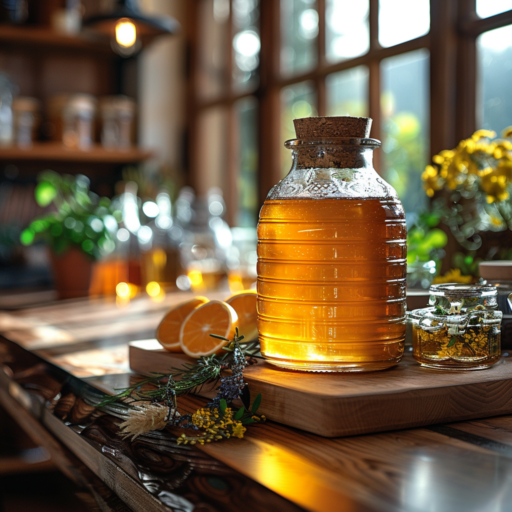
Glucose: has a lower sweetening power than sucrose (white sugar) and makes the ice soft and smoothwithout increasing the sweetness too much. I use Glucose powder*, as it is easier to dose.
Lauter sugar: is a Syrup solutionwhich are made up of equal parts Water and sugar is produced. Simply boil e.g. 250 g sugar and 250 g water together and fill while still hot. Due to the liquefaction of the sugar, it can be easily dosed and dissolves very easily in the mass.
Vanilla sugar: real vanilla sugar consists, as the name suggests, of Vanilla and sugar. This can be achieved either by storing sugar with (scraped out) vanilla beans or by adding ground vanilla beans to sugar. The often offered Vanillin sugar is made with synthetically produced vanilla flavoring. offset and should be avoided if possible.
Useful tools for ice cream making
There are a few devices that are good to use besides an ice cream maker to make ice cream. Most of it is probably already available in your own kitchen. Most of it is not absolutely necessary, but for some types of ice cream or sundaes it is easier.
Ice cream scoops*: for forming ice cream scoops. There are simple* or portioners, which have a device for easier dispensing of the scoop. The latter are often used in ice cream parlors.
Hand mixer*: for whipping creams and cream or for the Making ice cream in the freezer without ice cream machine.
Mixer: is important for pureeing fruit, for ice cream from the freezer before serving or for making Nicecream. I use a Bianco di puro*, as I also like to make smoothies and have therefore purchased a very high-quality appliance. But of course any 'normal' blender with the right power will do.
Spaetzle press*: good to use for making spaghetti ice cream. There are also own spaghetti ice cream presses, but for home use also does a spaetzle press.
Thermometer*: for checking the temperature when heating the ice cream mass, especially when egg is involved.
Scales: this kitchen utensil is one of the few that you definitely need. Alternatively, you can also use a measuring cup. But the scale definitely has the advantage that you can weigh any ingredient in grams and especially for the small quantities has become a Fine balance* Proven.
Citrus juicer*: to obtain orange, lime and lemon juice.
I hope you were able to take away something from this article and that you now really want to make your own ice cream.
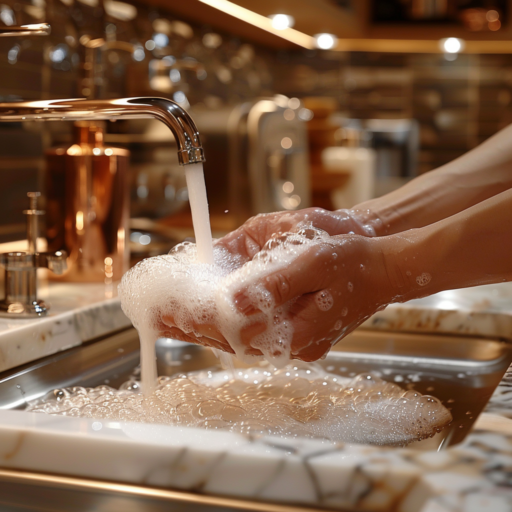
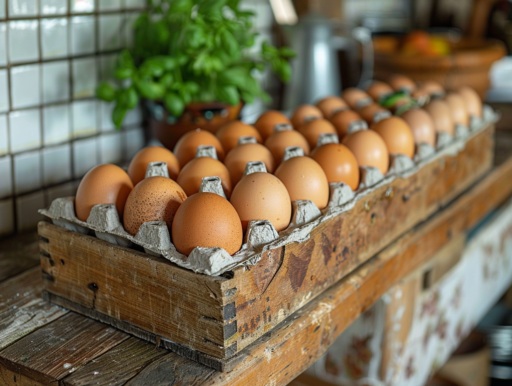
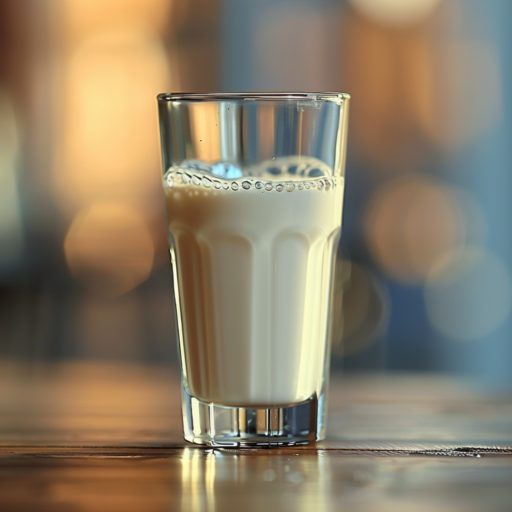
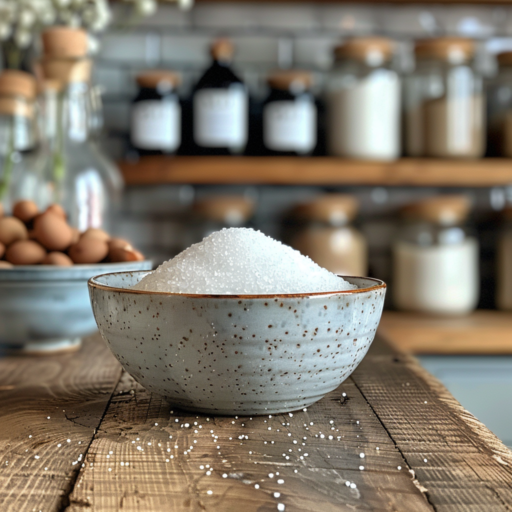
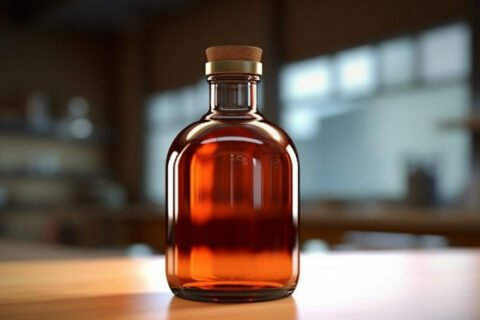
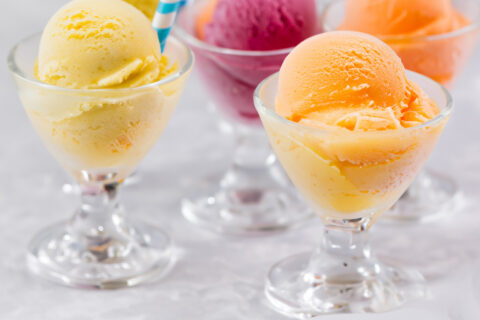
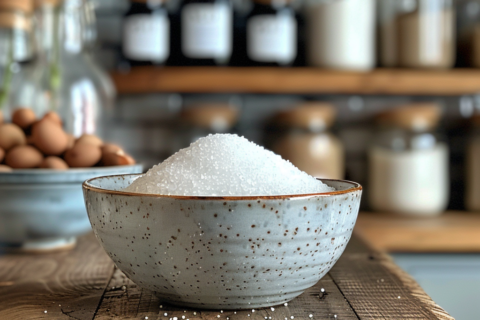

Really great summary!
Thanks for this nice introduction to the world of making your own ice cream.
Hello Lennart,
I am very happy that you like my post. Thank you very much for the nice comment! 🙂
The ice cream maker
Hello, I can only agree with this. Really very helpful. I do not know if here may also ask a question. If not just delete. Can I replace the lauter sugar 1:1 just like that?
Thank you and ♥️ Greetings
Hello Nicole,
thank you so much for your lovely comment. I am happy about every single one and of course you can ask questions 😀.
So 1:1 with sugar would mean it gets way too sweet. Also, dissolving the sugar is a good method so that it can be mixed quickly and easily with the mass. Especially if you don't heat it (cold preparation) it can otherwise happen that you still keep sugar crystals.
But maybe I misunderstood your question. With what do you want to replace refining sugar and for what purpose?
Then I'll be happy to reconsider what the best solution is for you.
Kind regards
Hello ice maker!
We have purchased an ice cream machine and there is in the instructions, if you have filled the ice cream ingredients in the machine, you can add the warm water and mix with the ice cream ingredients with the spatula! But it does not say how much water you need or why....!
Thanks in advance for the help!
Roland
Hello Roland,
This sounds to me like a manual that was translated incorrectly. I would not have come across any recipe or ice cream machine where such a procedure is provided. Or do you have a very special model? Which ice cream machine is it then?
You can find here on my blog quite a few instructions and recipes. The ice cream mixture is mixed together and heated if necessary, then you usually let it cool/mature and then fill the cold ice cream mixture into the switched on and precooled ice cream machine.
If you don't already have all the ingredients I usually use, why not try it with the Lightning recipe for peach ice cream, the Frozen yogurt recipe or Raspberry sorbet. Dextrose can usually be found in any major supermarket. The downside to the simpler recipes is that they get very hard in the freezer. Therefore, I recommend you to check out the different ingredients and to browse through the blog here a bit 😀.
Love and good luck!
Hello ice maker!
Thank you very much for the quick reply! The ice cream maker is a "medion md10169" with compressor! I don't think it's anything special. It only has three functions. Single mix mode, single chill mode and ice cream mode. It makes up to one kg of ice cream with a maximum capacity of 600ml. As already mentioned, the only thing that irritates us is the sentence: "Fill the prepared ingredients and warm water into the aluminum container,..."!
We have since viewed your blog and already know that we will become ardent followers!
Thanks again for your effort and help! Kind regards
Roland
Hello Roland,
I just looked at the instructions online. The description is really strange. I would not recommend this procedure. I think the instructions were written by someone who is not skilled in ice cream making. Do it better as it is described in my recipes.
I'm very happy that you like my blog and now you come by more often! 😀
Have fun making ice cream and get in touch if you have any questions.
Kind regards